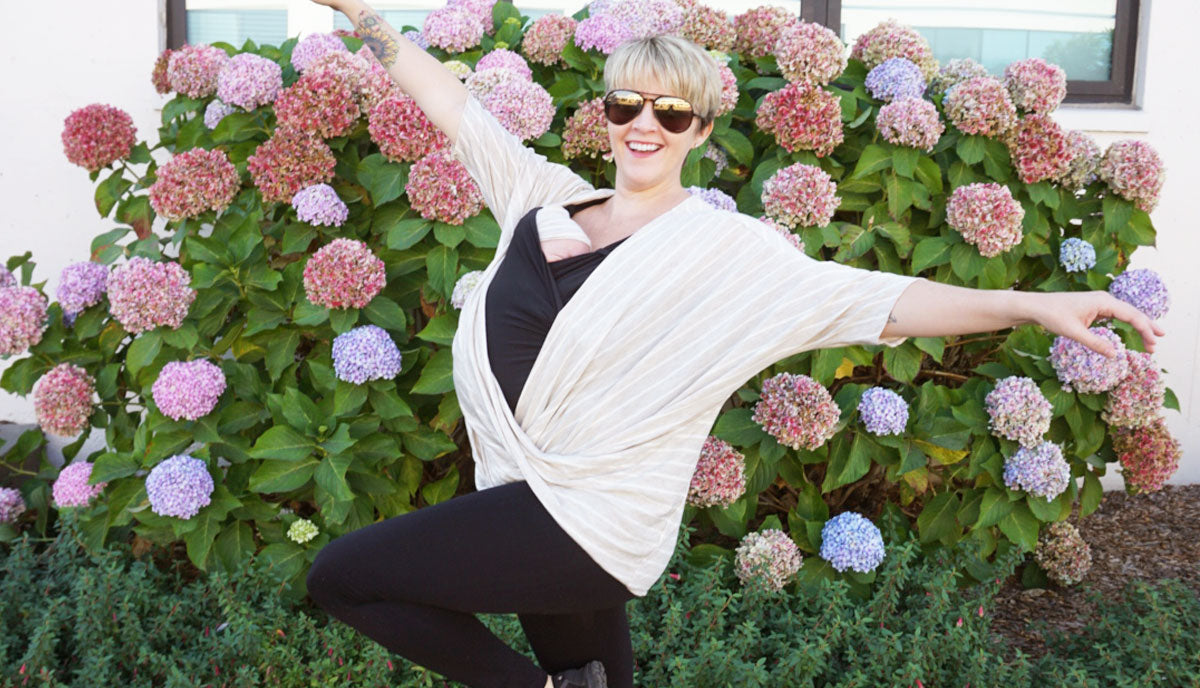As a postpartum doula, one of the first things I help my clients do is develop a Nesting Strategy around three key objectives: 1.) getting adequate rest and good nutrition to facilitate healing and lactation, 2.) delegating tasks to others so that she can focus is on nurturing herself and her baby, 3.) and spending lots of time skin-to-skin with her newborn.
As simple as these sound, they are not easy to achieve. Newborns don’t care if mommy is up all night with feedings, and for the postpartum mom the simplest tasks like preparing lunch and taking a shower can feel overwhelming. It isn’t any wonder that 70% of all new mothers will experience the baby blues, a mild form of depression that lasts for a few days to several weeks, and that for some, the feelings of overwhelm will deepen into postpartum depression (PPD). Each year over a million new mothers in the U.S. are diagnosed with PPD, and many more go undiagnosed.
NESTING – PART OF A MOVEMENT FOR CHANGE
Recording artistAlanis Moissette shared her bout with postpartum depression publicly, with the hope of bringing a greater understanding to what it is and how it can be treated. “I think if there is any goal in me talking about it, it would be to eradicate the shame around it. It’s just what happens sometimes and, for me, I just waited way too long to reach out for help.” We now know that new fathers also suffer from postpartum depression, and that depression is a disease.
New studies about how the human brain and body chemistry work are offering better ways of treating PPD, and many combine a variety of therapeutic approaches. One of those therapies is skin-to-skin contact.
Close your eyes for a moment and picture yourself dancing with someone you love. All of your senses are alive. You are close enough to smell their hair, feel the warmth of their body, and move in synchronicity without knowing how. As you melt into each other, your brain responds by sending oxytocin levels shooting through the roof. Caution: dancing can lead to baby making, but you are probably already aware of this. We humans are hardwired to love, and oxytocin is the love hormone.

Oxytocin is a mammalian hormone, or neuropeptide, consisting of nine amino acids. It is produced in the hypothalamus, an old region of the brain that coordinates basic behaviors, and is then released into both brain and bloodstream, where receptors in the olfactory system, neural pathways associated with touch, and regions of the spinal cord that regulate the autonomic nervous system, especially the parasympathetic branch, including the vagus nerve.
When we press our babies against our skin, heart to heart, we are literally connected at the vagus nerve, boosting our oxytocin level and producing feelings of warmth in our chest and a lump in the throat. The vagus nerve originates in the top of the spinal cord and when winds its way through the body (vagus is Latin for wandering), connecting up to facial muscles tissue, muscles that are involved in vocalization, the heart, the lungs, the kidneys and liver, and the digestive system. It is unique to mammals, and is believed to have evolved in response to the need to care for and nurture our young, and why we touch, gaze, coo and cuddle -- and experience feelings of joy, love and connection.
- Research has found that as little as three hours a day of skin-to-skin contact reduced infant crying by 43 percent, while also elevating the new mother oxytocin level and her feeling of confidence in her ability to sooth her infant.
- Another study showed that new mothers who had at least six hours of skin-to-skin contact during the first week of their baby’s birth, followed by at least two hours a day in the next month, reported fewer depressive symptoms.
- Mothers taking medication to relieve postpartum depression symptoms who practiced prescribed amounts skin-to-skin time, also experienced lesser symptoms than mothers on medication without the direction to hold their babies skin-to-skin.

Making skin-to-skin time part of your Nesting Strategy, along with getting the rest and nurturing you need during the postpartum period, is a first line of defense. Should you experience the baby blues for more than two weeks, take comfort in knowing that you are not alone. There are wonderful support groups to help you, and trained professionals who have made it their life's work to understand and treat postpartum depression. And by all means, keep dancing. Parenting is art, and learned by heart.
Below is picture of a mother and baby in a Nesting Daysnewborn carrier and a little rhyme to keep you dancing! You can almost see the oxytocin flowing.
 http://www.babyexpoandconference.com/
http://www.babyexpoandconference.com/
 Sources: Born to be Good, The Science of a Meaningful Life, by Dacher Keltner, pages 219 - 230. Journal of Obstetric, Gynecological, and Neonatal Nursing , originally appeared on Fox News.com. http://www.faqs.org/health/topics/27/Postpartum-depression.html#ixzz3BwEC4ddz
Sources: Born to be Good, The Science of a Meaningful Life, by Dacher Keltner, pages 219 - 230. Journal of Obstetric, Gynecological, and Neonatal Nursing , originally appeared on Fox News.com. http://www.faqs.org/health/topics/27/Postpartum-depression.html#ixzz3BwEC4ddz





Leave a comment (all fields required)